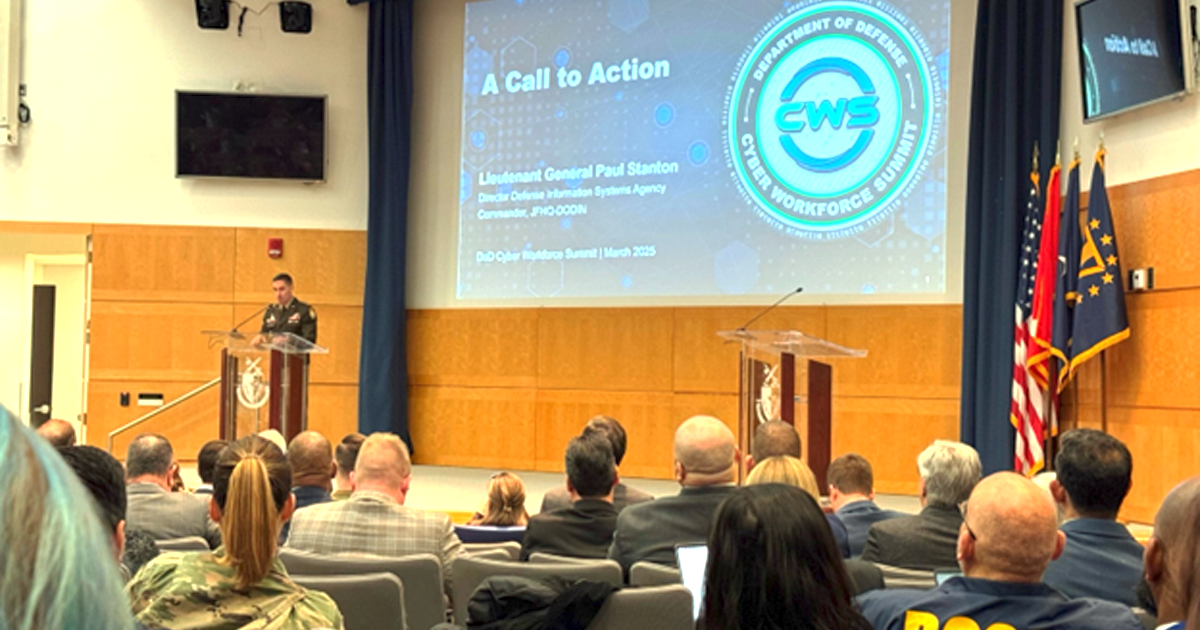
As cybersecurity threats to national defense grow in complexity and scale, the Department of Defense is taking decisive steps to ensure the cyber workforce is not only equipped but truly prepared. At a recent Department of Defense cyber workforce event, Lt. Gen. Paul Stanton, Director of the Defense Information Systems Agency (DISA) and Commander of Joint Force Headquarters–DoD Information Network, delivered a clear message in his keynote presentation: certification training under DoD Directive 8140 is not just a compliance requirement—it is a strategic necessity.
 |
“This is your moment to lean in, to take risks,” Arrington told the audience. “Our talent is our asymmetric advantage,” Stanton said. “We don’t have magazine depth and scale—our enemies do. What we have is talent and free thought. And let’s put those together so that we fight and win.” |
DoD Directive 8140 establishes a comprehensive framework for identifying, qualifying, and developing cyber professionals across the defense enterprise. By linking work roles to specific knowledge, skills, and certifications, the directive ensures a qualified cyber workforce—one capable of defending networks in a domain that evolves daily.
Stanton emphasized that battlefield success depends on understanding and leveraging data as a strategic asset: “There’s not a single thing on our current and future battlefield that’s not a data producer or a data consumer.” The modern commander must account for cyber effects in operational planning, and technical professionals must be equipped to deliver them.
“If you don’t understand how that data flows on the battlefield, you’re not an effective commander.” In this environment, cyber readiness demands more than awareness—it demands verified competence.
That’s where certification training becomes indispensable. “The days of being a cybersecurity expert that doesn’t understand operating systems, networking, and coding are gone,” Stanton stated. Certification ensures that individuals don’t just know of critical concepts—they can execute them in real-world conditions. “I need to ensure that individuals are qualified on their cybersecurity weapon system… not only know their responsibilities but have validated that they can execute them.”
Under 8140, certification is not a checkbox—it is a foundation for trust, enabling commanders to delegate with confidence. “When you know your job, you earn respect. That respect leads to trust. And when your leadership trusts you, that sets the conditions for mission command,” said Stanton.
For DoD contractors, aligning with 8140 is more than fulfilling a contract—it’s about contributing meaningfully to the defense mission. “We are at war with our adversaries in the cyberspace warfighting domain on a daily basis. If you’re waiting for your tool to blink and alert, you’re too slow. You’re too late.”
Ultimately, the directive is a vehicle for building a certified, capable, and unified cyber workforce—across military, civilian, and industry sectors. “It’s a call to action. Not to write PowerPoint slides. Not to develop a policy. But to train, to fight, and to win.”
Certification is only the beginning. To meet the demands of the modern threat environment, cyber professionals must not only earn credentials—they must sustain and evolve them. Technologies change, adversaries adapt, and yesterday’s knowledge quickly becomes obsolete. Ongoing training is what transforms certification from a static requirement into a dynamic force multiplier.
As Lt. Gen. Stanton made clear, “Your competency has a time bound associated with it. You’ve got to stay current.” DoD 8140 provides the structure, but it’s the commitment to continuous learning that ensures the force remains sharp, trusted, and ready. A certified workforce is not enough—we must build a qualified, requalified, and ever-capable one, prepared to outpace our adversaries at every turn.